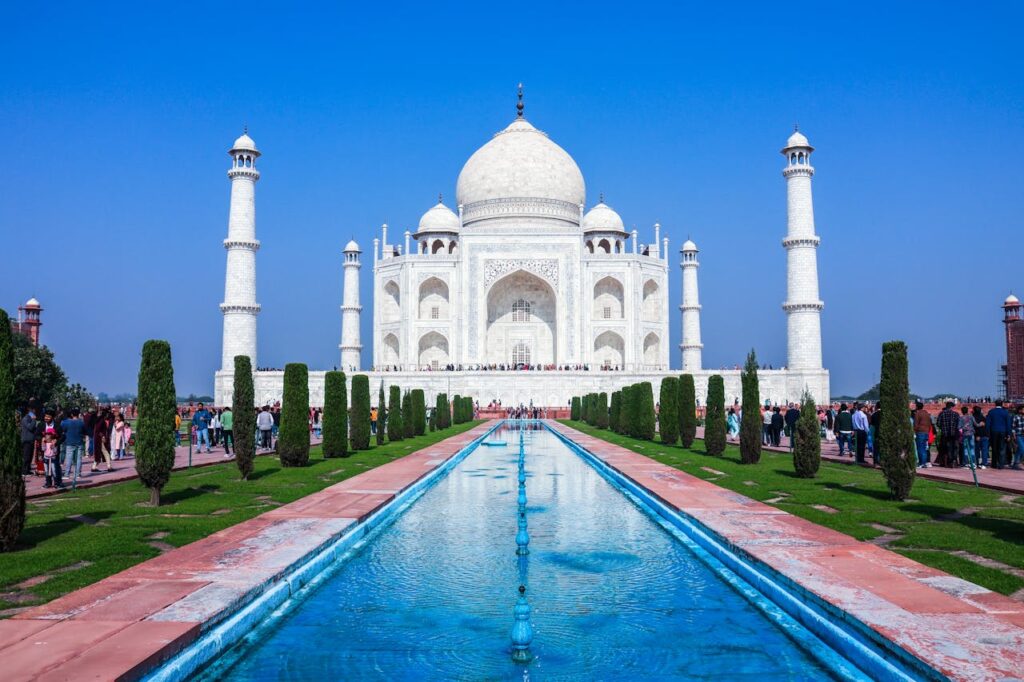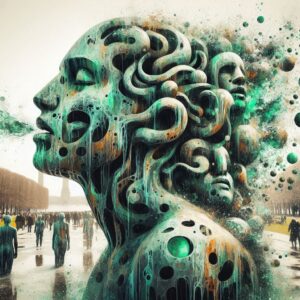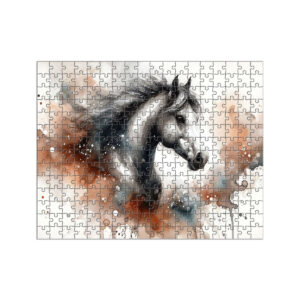
Explore & Play
Discover interesting topics and solve the accompanying crossword puzzle.
Emperor Crossword | Famous Rulers and Their Legacies
Table of Contents
Emperor Crossword
You can either fill in the crossword puzzle directly on this page or click the button in the bottom right corner to print it for free.

The Rise and Fall of Empires: How Emperors Contributed to the Cycle of Political Power
The rise and fall of empires has been a recurring theme throughout history, with emperors playing pivotal roles in shaping the destinies of entire nations and continents. These rulers wielded immense power, influencing everything from military conquests to cultural identity. However, empires, no matter how great, ultimately fall into decline, often due to internal and external forces. The emperors who led these empires were both the architects of their rise and the agents of their eventual downfall.
Throughout this article, we will explore how emperors like Augustus, Napoleon, and Genghis Khan contributed to the cycles of political power, impacting their empires’ trajectories. By examining both their successes and failures, we will uncover the timeless pattern that defines the rise and fall of empires. Along the way, terms from a related crossword puzzle, such as “Napoleon,” “Trajan,” and “Haile Selassie,” will be referenced to further illustrate the diverse ways emperors influenced history.
I. Understanding the Cycle of Political Power
What is the “Cycle of Political Power”?
The cycle of political power refers to the inevitable rise, peak, and decline of empires throughout history. This cycle is a natural consequence of both external pressures and internal contradictions within an empire. Empires often start with strong leadership, which drives them to expand, conquer, and dominate. However, over time, internal instability, corruption, and external invasions can lead to their downfall.
Empires like Rome, China, and the Ottoman Empire all experienced this cycle, each of which can be traced back to the actions of their emperors. The rise of an empire typically begins with an emperor or leader who has a vision to unite people under one rule, expanding through military campaigns and political alliances. However, empires cannot last forever, and even the most powerful rulers can only delay the inevitable collapse.
Key Factors Influencing Empire’s Rise and Fall
The key factors that influence an empire’s rise and fall include leadership, military success, economic power, and cultural innovation. Emperors are often the central figures who maintain the balance of power, ensure military victories, and implement reforms that can either stabilize or destabilize the empire. For example, Augustus reformed the Roman Empire after its chaotic period, while leaders like Napoleon extended the borders of France. However, over time, the weight of overextension, internal strife, and corruption can bring about the empire’s fall.
II. The Rise of Empires: Ambitions and Visionary Emperors
Augustus: The Founder of the Roman Empire
The Roman Empire stands as one of the most iconic examples of imperial rise. Augustus, the first emperor, played a crucial role in transforming the Roman Republic into an empire. Following the assassination of Julius Caesar, Augustus capitalized on the political chaos and emerged as the uncontested leader. His reign marked the beginning of the Pax Romana, a period of relative peace and prosperity that lasted for over two centuries. Augustus was not just a military leader; his strategic reforms in governance, taxation, and infrastructure laid the foundation for the empire’s dominance.
Napoleon: The Rebirth of the French Empire
Napoleon Bonaparte’s rise is a remarkable story of ambition and military genius. From his beginnings as a general in the French Revolutionary Wars, Napoleon rapidly ascended to power, declaring himself Emperor of France in 1804. His vision of a united Europe under French control led to extensive conquests across the continent, influencing political landscapes for generations. Napoleon’s legal reforms, such as the Napoleonic Code, and his military prowess earned him a lasting legacy, despite the eventual defeat that marked the end of his reign.
Ming Dynasty and Qin Shi Huang: Unifiers of China
In China, two emperors stand out for their contributions to the rise of the Chinese empire. Qin Shi Huang, the first emperor of the Qin Dynasty, unified China through military conquest and infrastructural development, including the creation of the Great Wall of China. His vision transformed the fragmented states into a single, centralized empire. The Ming Dynasty, later on, also saw monumental growth, with emperors like Zhu Yuanzhang leading China to unprecedented prosperity and territorial expansion.
The Role of Visionary Leadership
All of these leaders—Augustus, Napoleon, Qin Shi Huang—were united by their visionary leadership. They were able to unite diverse people and establish powerful empires by leveraging their political, military, and economic skills. Their ambition pushed their empires to great heights, but this same ambition sometimes led to overextension and eventual decline.
III. The Golden Age of Empires: Flourishing under Powerful Emperors
The Roman Empire under Trajan and Constantine
At the height of the Roman Empire, emperors like Trajan and Constantine expanded its borders and brought about lasting changes. Trajan, one of the Five Good Emperors, led military campaigns that expanded Rome’s territory to its greatest extent. Constantine, on the other hand, is remembered for converting to Christianity and making it the Roman Empire’s state religion, fundamentally altering the cultural landscape of the empire. Constantine’s reign laid the groundwork for the Byzantine Empire, which continued to thrive long after the fall of the Western Roman Empire.
Peter the Great and the Expansion of Russia
Peter the Great’s reign marked a turning point in Russian history. Seeking to modernize Russia, Peter reformed the military, introduced Western technologies, and expanded Russian territory. His efforts to make Russia a European power earned him the title of Tsar and left an indelible mark on the country’s political and cultural identity. Peter’s strategic vision set Russia on a path to become one of the world’s most influential empires.
Suleiman the Magnificent and the Ottoman Empire
Suleiman I, known as Suleiman the Magnificent, was one of the greatest sultans of the Ottoman Empire. His reign marked the empire’s height, with vast territorial expansion and cultural achievements. He reformed the legal system, contributing to the lasting stability of the empire, while his military conquests extended Ottoman rule from North Africa to Eastern Europe. Suleiman’s leadership cemented the Ottoman Empire’s dominance for centuries.
Catherine the Great’s Expansion of Russia
Catherine the Great is one of Russia’s most celebrated rulers. Her reign was marked by significant territorial expansion, bringing large parts of Eastern Europe and the Black Sea region under Russian control. Catherine also fostered the arts and culture, strengthening Russia’s position as a European power. Her political savvy and ability to navigate the complexities of the Russian court allowed her to secure her place in history.
IV. The Decline of Empires: Tyranny, Invasions, and Internal Struggles
Nero’s Tyranny and the Fall of Rome
While Rome reached its height under emperors like Trajan and Constantine, it faced significant challenges during the reign of Nero. Nero’s reign is infamous for its cruelty, corruption, and mismanagement, which weakened the foundations of the Roman Empire. His leadership, marked by tyrannical excess, contributed to civil unrest and eventually to the empire’s instability, culminating in the chaos following his death.
The Fall of the Byzantine Empire: Empress Theodora’s Influence
The Byzantine Empire, the Eastern continuation of the Roman Empire, reached its peak under emperors like Justinian I. However, it eventually fell to the Ottoman Turks in 1453. Empress Theodora, Justinian’s wife, played a key role in the empire’s governance, often standing up to challenges from both within and outside the empire. Despite her efforts, the empire could not withstand the pressures of internal dissent and external invasions.
Napoleon’s Downfall: From Emperor to Exile
Napoleon’s downfall is one of the most famous stories of imperial collapse. Overextended and overconfident, Napoleon’s campaigns ultimately led to his defeat. The failed invasion of Russia in 1812 proved to be a turning point, and despite his earlier successes, Napoleon was exiled to the island of Elba, marking the end of his empire. His brief return, known as the Hundred Days, was also short-lived, as he was defeated at the Battle of Waterloo and exiled again to Saint Helena, where he died in 1821.
The Decline of the Qing Dynasty and the Role of Emperors
The Qing Dynasty, the last imperial dynasty of China, experienced a gradual decline due to both internal corruption and external pressures. Emperors like the young Puyi were unable to respond effectively to the challenges posed by Western imperialism, internal rebellions like the Taiping Rebellion, and the rise of revolutionary movements. In 1912, the Qing dynasty was overthrown, and China became a republic.
Suleiman the Magnificent’s Successors: The Decline of the Ottoman Empire
After the death of Suleiman the Magnificent, the Ottoman Empire began to lose its momentum. Successive sultans failed to maintain the empire’s military and political power. Internal strife, combined with the growing power of European nations, led to the gradual decline of the Ottoman Empire, which formally collapsed after World War I.
V. Emperors and Their Influence on Culture and Governance
The Role of Religion: Constantine, Akihito, and Ashoka
Religious influence has been a central theme in many empires. Emperor Constantine’s conversion to Christianity shaped the Roman Empire’s religious direction, setting the stage for Christianity to become a dominant force in Europe. Similarly, Ashoka, the Mauryan Emperor of India, embraced Buddhism and spread its teachings throughout his empire, transforming not only governance but also the spiritual life of the people.
Legal Reforms: Napoleon’s Code and Frederick II’s Legacy
Emperors like Napoleon and Frederick II of Prussia had a lasting impact on legal systems worldwide. Napoleon’s Napoleonic Code became the foundation of many modern legal systems, promoting equality before the law and protecting individual rights. Frederick II of Prussia was also known for his legal reforms, which modernized the Prussian state and influenced European legal traditions.
Cultural Renaissance: The Ming Dynasty and Peter the Great
The Ming Dynasty in China saw a flourishing of art, literature, and architecture, underpinned by the leadership of emperors like Zhu Yuanzhang. Meanwhile, Peter the Great’s efforts to modernize Russia included fostering cultural exchange with Western Europe, which resulted in significant changes to Russian art, literature, and science.
VI. Emperors as Symbols of National Identity
King Harald V of Norway and the Modern Monarch
King Harald V of Norway represents the modern monarch, whose role is more symbolic than political. While Norway no longer has an emperor, the monarchy serves as a unifying force, embodying the nation’s history and values. King Harald’s reign has seen Norway evolve into a modern constitutional monarchy, but his symbolic importance remains unchanged.
Emperors and National Identity: The Case of Haile Selassie and Mansa Musa
In Ethiopia, Haile Selassie’s leadership made him a symbol of national identity, especially in the context of the country’s resistance to colonialism. Similarly, Mansa Musa of Mali became a symbol of African prosperity and strength. These emperors used their power to foster national pride and shape their countries’ identities on the global stage.
The Symbolism of Emperors: From Napoleon to Queen Victoria
Emperors like Napoleon and Queen Victoria served as enduring symbols of their nations, representing both the power and the aspirations of their people. While their reigns marked periods of territorial expansion and political influence, they also represented national identity, embodying their empires’ cultural and political values.
VII. The Modern Era: Emperors, Kings, and the End of Absolute Power
King Charles III and the Role of Modern Monarchies
In the modern era, the role of emperors has shifted dramatically. King Charles III represents a new kind of monarch, one whose role is primarily symbolic. While he holds no real political power, his position as the head of state for the UK is still vital to the country’s national identity. His reign marks the continuity of monarchy in a rapidly changing world.
The End of the Qing Dynasty and Imperial China
The fall of the Qing Dynasty marked the end of imperial rule in China, a country that had been under the rule of emperors for millennia. The last emperor, Puyi, became a puppet ruler under Japanese influence before the empire was formally abolished in 1912.
The Decline of European Monarchies: From Napoleon III to King Michael I
In Europe, monarchies have largely been replaced by republics or constitutional monarchies. Napoleon III of France represented the final gasp of imperial ambition in France before being deposed following France’s defeat in the Franco-Prussian War. King Michael I of Romania was the last reigning monarch of Romania, forced to abdicate in 1947 as communism took hold in Eastern Europe.
Conclusion: The Legacy of Emperors in Shaping World History
Empires have risen and fallen throughout history, each driven by the actions and decisions of emperors. While some emperors achieved greatness and secured lasting legacies, others contributed to their empires’ downfall through mismanagement, tyranny, or failure to adapt to changing circumstances. Nonetheless, the actions of these rulers have shaped the world as we know it today. From Augustus to Haile Selassie, emperors have left their mark on politics, culture, and history, serving as powerful symbols of both unity and division. Their legacies continue to be studied and debated, providing valuable lessons for leaders today.
Before you go, why not challenge your knowledge of historical empires and emperors by solving the crossword puzzle? Play now and discover how well you know these iconic rulers and their influence on the course of history!
Share to...
I hope you enjoy the content.
Want to receive our daily crossword puzzle or article? Subscribe!
You may also be interested in
Share to…
Want to receive our daily crossword puzzle?
-
Jigsaw Puzzles
Vigeland Park Fantasy Puzzle 250 | 300 | 500 Pieces
kr 348,00 – kr 439,00Price range: kr 348,00 through kr 439,00 Select options This product has multiple variants. The options may be chosen on the product page -
Jigsaw Puzzles
Majestic Horse Watercolor Jigsaw Puzzle 250 | 300 | 500 Pieces
kr 348,00 – kr 439,00Price range: kr 348,00 through kr 439,00 Select options This product has multiple variants. The options may be chosen on the product page -
Jigsaw Puzzles
Fjord Elegance: Abstract Jigsaw Puzzle 250 | 300 | 500 Pieces
kr 348,00 – kr 439,00Price range: kr 348,00 through kr 439,00 Select options This product has multiple variants. The options may be chosen on the product page

















